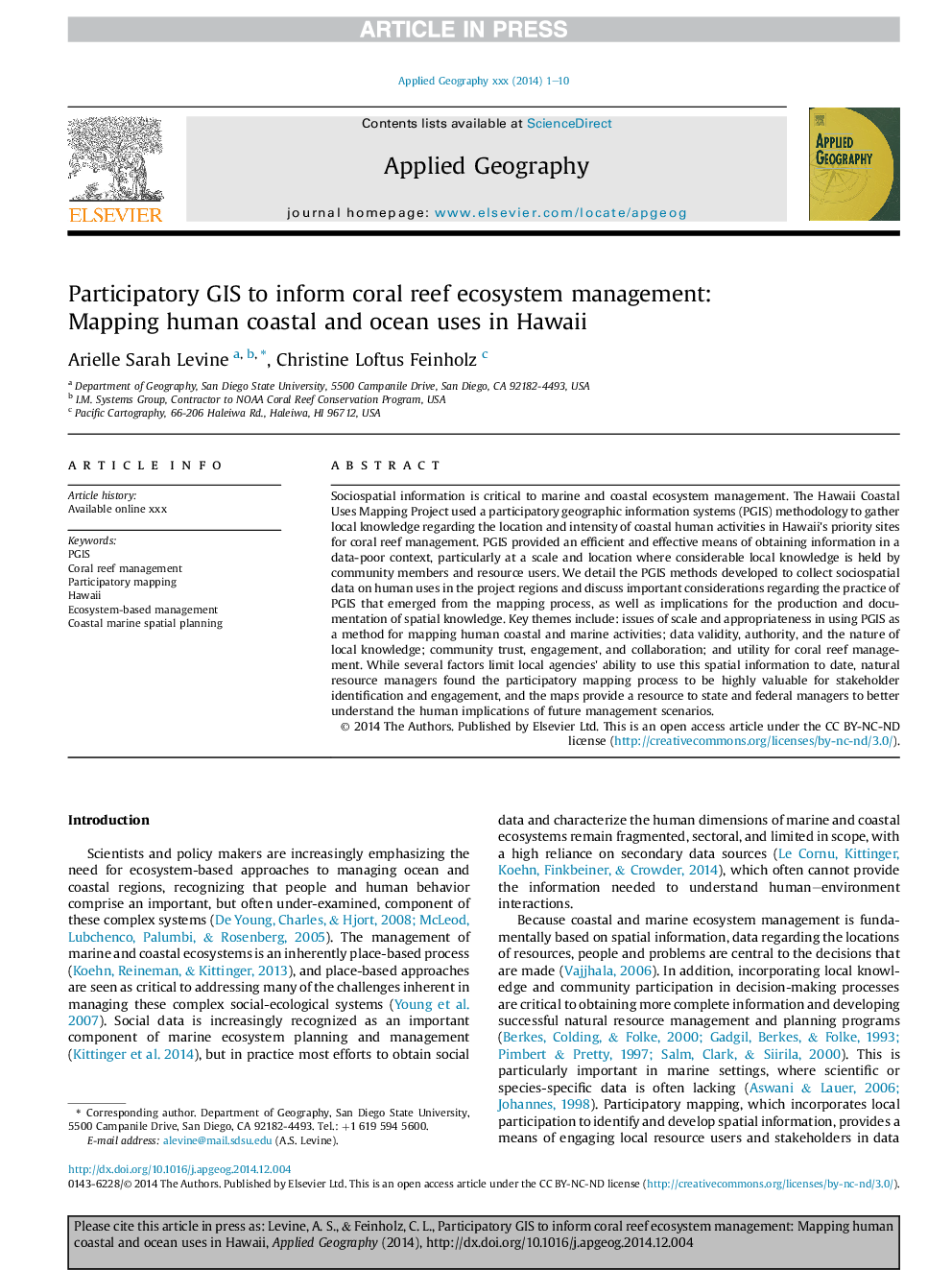| Article ID | Journal | Published Year | Pages | File Type |
|---|---|---|---|---|
| 6538571 | Applied Geography | 2015 | 10 Pages |
Abstract
Sociospatial information is critical to marine and coastal ecosystem management. The Hawaii Coastal Uses Mapping Project used a participatory geographic information systems (PGIS) methodology to gather local knowledge regarding the location and intensity of coastal human activities in Hawaii's priority sites for coral reef management. PGIS provided an efficient and effective means of obtaining information in a data-poor context, particularly at a scale and location where considerable local knowledge is held by community members and resource users. We detail the PGIS methods developed to collect sociospatial data on human uses in the project regions and discuss important considerations regarding the practice of PGIS that emerged from the mapping process, as well as implications for the production and documentation of spatial knowledge. Key themes include: issues of scale and appropriateness in using PGIS as a method for mapping human coastal and marine activities; data validity, authority, and the nature of local knowledge; community trust, engagement, and collaboration; and utility for coral reef management. While several factors limit local agencies' ability to use this spatial information to date, natural resource managers found the participatory mapping process to be highly valuable for stakeholder identification and engagement, and the maps provide a resource to state and federal managers to better understand the human implications of future management scenarios.
Related Topics
Life Sciences
Agricultural and Biological Sciences
Forestry
Authors
Arielle Sarah Levine, Christine Loftus Feinholz,
